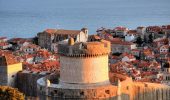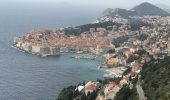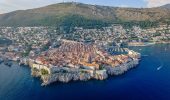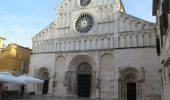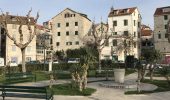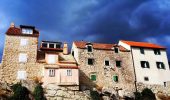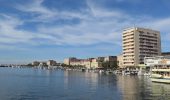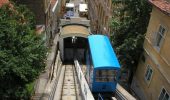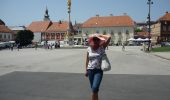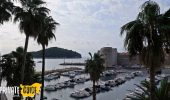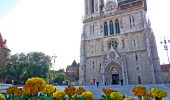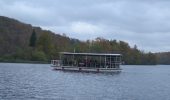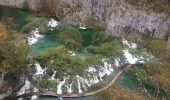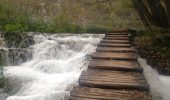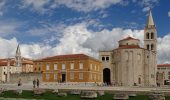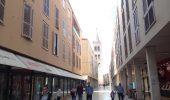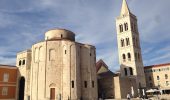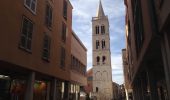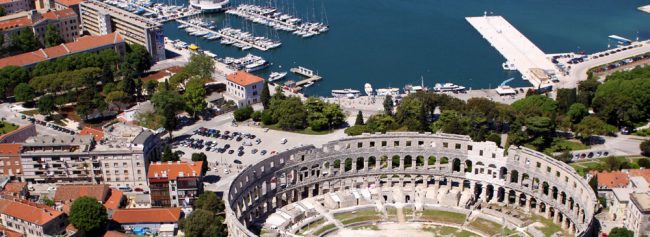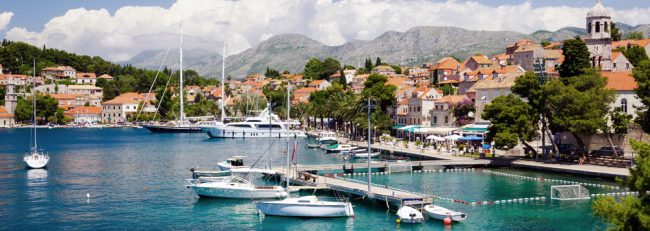
Croatia is a small gem of a country rich in natural beauty and opportunities for cultural tourism – it makes the best choice to add to your guided tour through the Balkans. It’s easy to see the lesser known spots few travelers get to experience when you’ve a private guide in Croatia from Balkan Tales to lead the way.
Your guided tour of Croatia will be great because:
- Your guide is a local with perfect grasp of English, making communication simple and pleasant.
- Flexible itinerary tailored to fit the interest of the your group.
- Excellent organization to ensure you see everything on your itinerary without hurrying and actually enjoying yourself.
Croatia is known for its natural beauty and rich history. Both Zagreb and Dubrovnik are recognized with UNESCO heritage sites and in Pula, 
Local Currency: Croatian Kuna
Population: 4 047 000
Who needs Visa: Check the visa requirements for your country >> here <<
Religion: 86.28%Catholics, 4.44%Orthodox Christians,1.47%Muslims.
Language: Standard Croatian
When to go: Low season ; Mid season ; High season .
See our recommendations and places where we’d love to take you on your guided tour of Croatia.
Have something special or wild you’d like to do here?
Send us your preferences and we will put together an itinerary for your tour!
Cities to stay
To get the best from your Croatia tour, we suggest you choose the following cities to stay overnight.
Dubrovnik – the Pearl of the Adriatic
- Dubrovnik is an outstanding destination on the Mediterranean and also a UNESCO site.
- In the past, especially in the 15th and 16th centuries, it rose to prominence in wealth, with busy trade.
The Sponza Palace, the Rector Palace, the St. Savior Church are examples of old and imposing Renaissance buildings. The library of the Franciscan Monastery features a 15th century silver cross, and an 18th century crucifix.
The Archeological Museum with over 150,000 artifacts is worth a visit. Visit the City Museum to learn about Split’s heritage, culture, economy. The Maritime Museum will show marine equipment and weapons.
Outside St Mary’s Cathedral, you will see the amazing Holy Mary monument. The Museum of Illusions will leave indelible memories with the Kaleidoscope, the Vortex Tunnel, Holograms, and other fascinating sections.
Places to visit
Places to visit in Croatia
The below suggestions will look great on your itinerary.
Plitvice Lakes National Park
The oasis of untouched nature
- Plitvice Lakes National Park is listed in UNESCO’s list as a heritage site.
- The protected area covers over 296 square kilometers.
- The 16 lakes, formed by river confluences, are arranged in cascades and separated by dams.
The Plitvica river joins the lakes on the north via a waterfall. The river and the lakes reach to the lowest lake, where the point of origination of the Korana river is. Lots of Orchids grow here. Brown bears and wolves breed in the park.
Roman landmarks are preserved to tell stories of glorious times, like the Roman Forum founded by Augustus, and the aqueduct. Churches merit special attention. The Church of St. Donatus dates from the 9th century. Another gem is St. Anastasia’s Cathedral; its construction is dated to the 12th-13th centuries. The Sea Organ plays via sea waves; its tubes are under a set of marble steps.
Hvar island
The one of the most popular nautical destinations in Croatia
- Hvar island lies in the Adriatic. Its diversity combines fresh water springs, pine forests, olive groves, lavender fields and orchards.
- First inhabitants settled here in Ancient Greek times, the city ranks among the most ancient Europe.
- The Stari Grad Plain is among UNESCO sites of heritage.
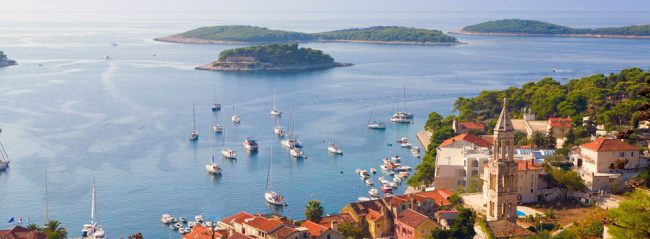
Pula
Pula is the city of ancient myths, whose beginnings fade in the haze of history.
- Pula lies on the tip of the Istria, a Croatian peninsula, and prides itself on wine making, fishing, and sea vacations.
- The local Roman buildings, including the Amphitheatre, are from the first century.
Brač
Brač is the „tallest“ island in the Adriatic and also a point for surfing in Croatia
- Brač island is in the Adriatic, divided from the mainland via a channel.
- Fishing, wine making, and olive growing is what local people do for centuries.
- The white stone from the island was used for the building of Diocletian’s Palace in Split, and for a national memorial in Canada.
Korcula & Pelješac
Korcula is the birth place of the famous world traveler Marco Polo
- On Korčula make sure you don’t miss the sword dances.
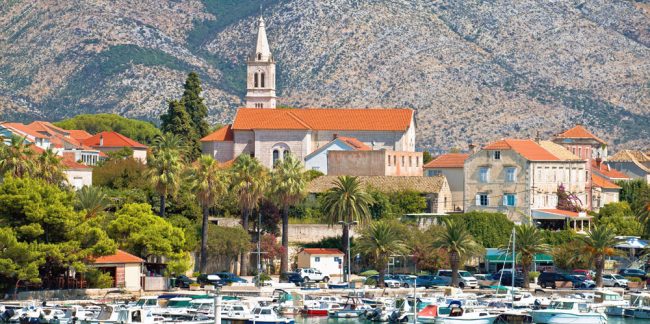
The Pelješac strait is the separating area between Korčula and the Pelješac peninsula.
Konavle
Konavle is the land of waterfalls and watermills with small canals throughout the region.
- Take the ferry to Dubrovnik for a sea experience.
- Enjoy a voyage on one of the luxury ships in Cavtat.
- The promenade and the old town must be seen for full impressions of Cavtat.
Easily reached from Dubrovnik, Cavtat as in the center of Konavle municipality. That is one of the country’s richest counties, lying between the mountain Sniježnica and the Adriatic Sea. The mountain peak rises to 1234 meters.
Cavtat, the principal town that lies by the coast. Founded by ancient Greeks, which is why its name means “old town”, destroyed by Avars, later Cavtat was rebuilt. There is a mausoleum of the local Račić family in the Cavtat cemetery.
KRKA national park
Krka is the second most-visited of Croatia’s national parks.

The hiking trails are convenient for exploring the park.
Rijeka
Rijeka is the most important Croatian seaport.
- The Trsat Castle is a 13th century fortress with a view on the river valley.
- Stadiom Kantrida is a football stadium that is impressive not only to the football fans, with its location between a former quarry, cliffs, and the Adriatic coast.

Since 1982 the Rijeka Carnival has been the main event.
Things to do
What to do in Croatia?
- Roam the Dubrovnik old town
- Visit the Diocletian palace in Split
- Go on the Game of thrones tour in Dubrovnik old town
- Take the cabin ling for amazing Panoramic sightseeing of Dubrovnik
- Visit the Broken relationships museum in Zagreb
- Try the Croatian Pastry
- Go on an island hopping from Split or Dubrovnik
Wine tourism
- Sample Hvar wines, exported to many countries, especially the Plavac Mali wine.
- Svirce will offer organic wines.
- Reach Dingač through a fascinating tunnel passing under a hill, to arrive at the vineyards and the Matuško winery.
The climate makes it easy to grow grapes and offer unique wines tourists can sample on a wine tour. Wine tasting tours, competitions in grape harvesting, and accompanying meals complement the charm of the country.
Dalmatia is one of the areas for wine tasting. On Hvar island, wine tasting along with sampling fish and seafood is a must do. On Pelješac peninsula, near Dubrovnik, red wines are the best, delicious in tranquil settings and accompanied by great food. The most famous wine regions are Dingač and Postup. The most renowned wine on the is Plavac Mali. For wines you can also visit Slavonia, area in the east known for its great wineries.
Island hopping from Dubrovnik to Split
- A taxi boat can take you from Hvar to the Pakleni Islands.
Acquaint yourself with the charming Dalmatian coast by doing Island hopping by ferry. Start with the UNESCO listed old town of Dubrovnik, and continue to Korčula and Hvar. On Hvar, 2 hours away from Korčula by ferry, you will admire the Franciscan monastery. Finish the tour at Split, where the UNESCO listed Diocletian Palace is a must see.
Yachting in Montenegro
- For a top yachting experience go to Split, Dubrovnik, or Zadar.
- The Dalmatian islands are favorites with numerous yachting enthusiasts.
- The exciting yachts, sailing boats, and motor sailors made of local wood sail smoothly along the Adriatic.
CROATIA IN BALKAN TOUR ITINERARIES
Balkan Tales Welcomes You to Croatia!
Add Croatia to your tour by answering the questions in our questionnaire. Also, if you have a clear plan in your head, send it directly to us.
The team at Balkan Tales will send you your custom itinerary.
LET'S START PLANNING YOUR TOUR!
Our tours are private and customized around your interests

